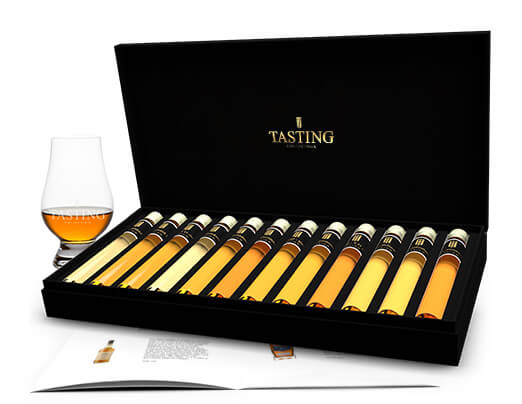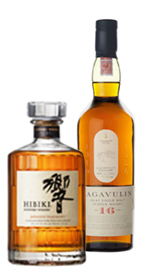RumRum is made from the by-products of sugar cane (especially molasses) or sometimes from fresh sugar cane juice or sugar cane syrup. Fermentation produces alcohol and, depending on the method used, distillation produces a drink with a higher alcohol content of between 65 % and 95 % by volume. Usually the rum is bottled at around 40% vol. alcohol. |
Production
The sugarcane molasses is first diluted with clean water, so that complete fermentation would result in an alcohol fraction of 7% to 8%. This solution is then fermented. Depending on the method, this takes 2 to even 12 days. Slow fermentation produces a product with more higher alcohols and esters than fast fermentation. The rum is then distilled in a so-called pot still (batch process) or a column still (continuous process). In the pot stills, which provide alcohol percentages of around 80-88%, the more aromatic rums are generally distilled. In the column stills (which typically produce up to 93-95.8% alcohol by volume), the so-called light rums. After this, the rum can still mature in wooden barrels, where the rum gets extra colour, depending on the maturation period and the degree of carbonization of the wood. In many cases, former bourbon barrels of about 200 litres, made from blak American oak, are used to ripen the rum. Rum, aged in stainless steel barrels remains colorless. To these are often added colorants, such as caramel,
Most of the light rum comes from Puerto Rico. Most dark rum comes from Jamaica, Haïti, and Martinique.
In general, the rums sold in bottles are blends. This means that various types of rum are mixed in order to obtain a constant quality of the type/brand in question, but even more in order to arrive at a product that is unique to the seller. Rum can be drunk pure or as a mix with cola (the so-called Cuba Libre or BaCo, from Bacardi-Cola). Rum can also be used for cooking and is used as a raw material in the aroma industry and in the confectionery and food industry. It is also used as a flavouring in which other aromas dissolve well, such as in the tobacco industry.
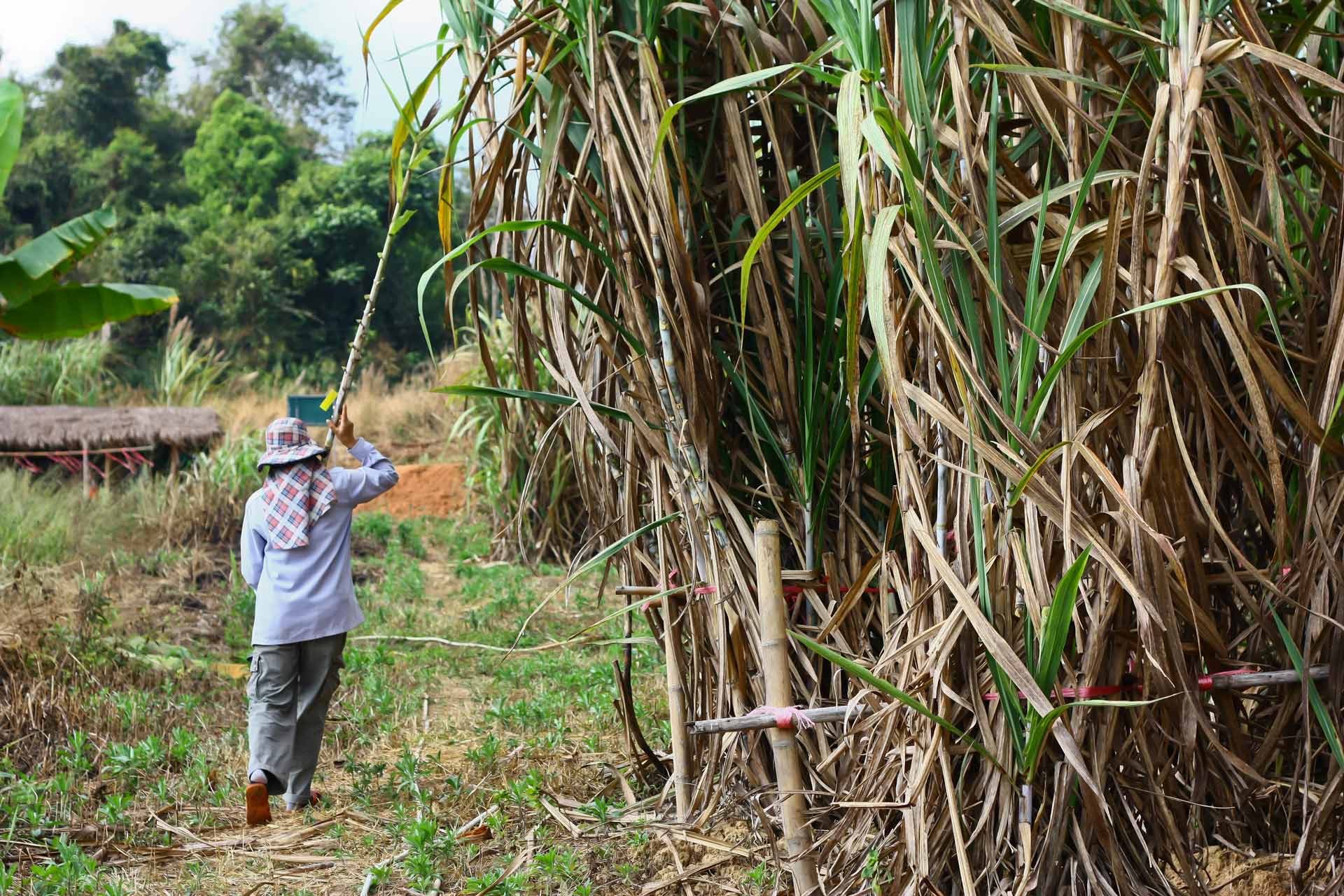
Regions
Rum is distilled all over the world, but generally where sugar cane also grows and is therefore available. In fact, it is a by-product of cane sugar production. Each country and/or region has its own characteristic way of fermenting and distilling, which means that there is a very wide range of types of rum. There are a number of sugar cane distillates that are referred to by a different name than rum. For example, there is Cachaça, which is a sugar cane distillate, but only from Brazil. Batavia Arrak is a sugar cane distillate from Indonesië.
. Rum is according to European legislation:
A sugar cane distillate that must be distilled below 96% alcohol and have the organoleptic characteristics of rum.
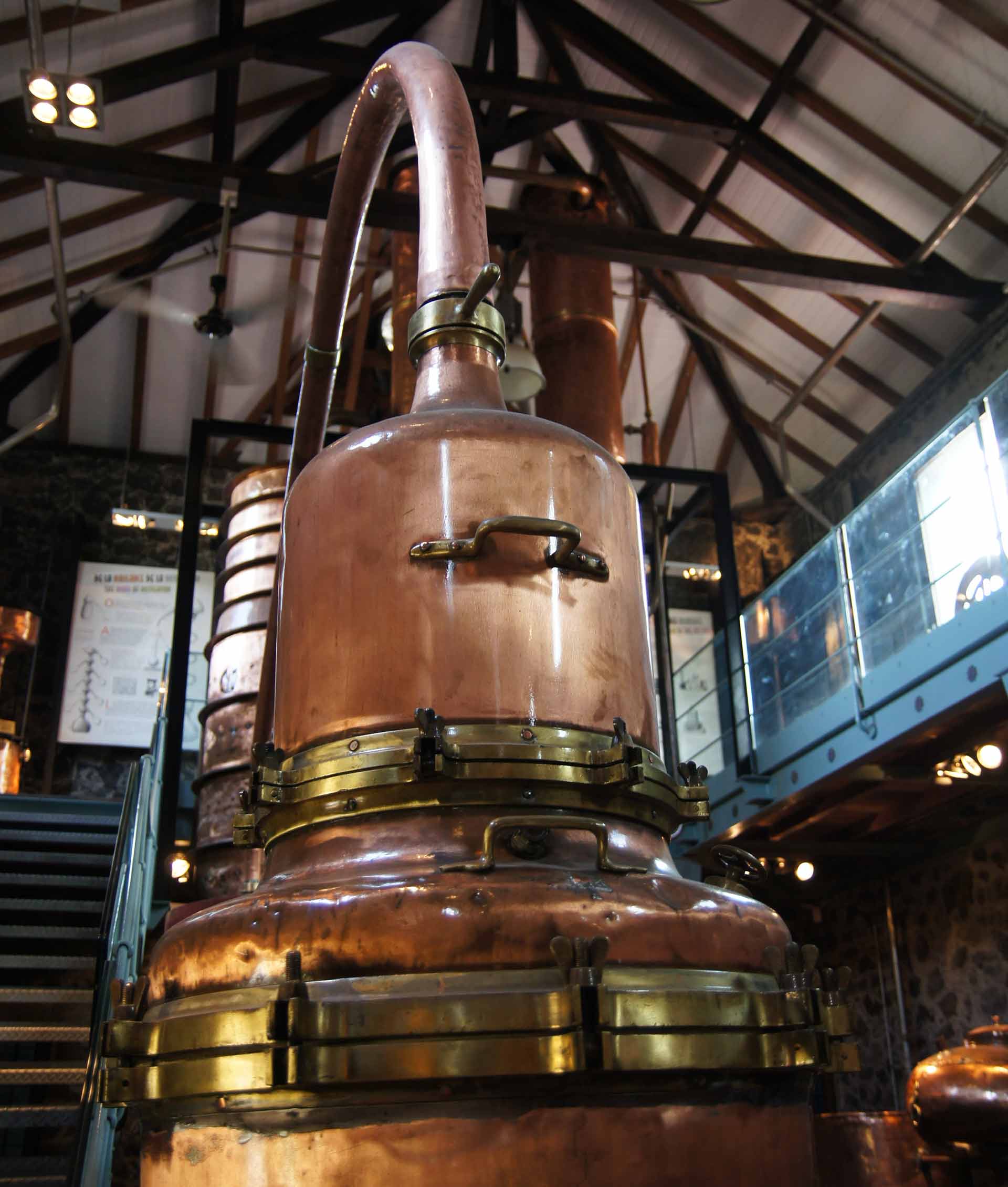
The history of Rum
Caribbean rum has been exported from the islands for hundreds of years, coupled with the tropical and subtropical climates where sugar cane thrives. It was Christopher Columbus himself who first brought sugar cane to the Caribbean from the Azores. But the origins of rum are much older, dating, most experts say, over 2000 years. Sugar cane grew unbridled in parts of southern China and India, and Alexander the Great, after the conquest of India, brought him to Egypt "the weeds that give honey without the help of bees." The Muslim people of the Middle Ages, known as the Saracens, made their knowledge of distilling sugar cane to the Moors, which is arrack (sugar cane based proto-rum) and planted sugar cane in Europe sometime after Chr 636. Columbus brought sugar cane to Puerto Rico on his second trip in 1493. Later, Ponce de León, the first Spanish governor of the island, planted the first reed beds in Puerto Rico, which would soon become vital to the local economy and to the world's palate for fine spirits. Some historians speculate that Ponce de León was the legendary search for a mythical fountain of youth, in fact a much more practical search for a source of pure water to use in its distillation of rum.
The first sugar factory, a precursor to the Puerto Rican rum industry, was built in 1524, when the product of cane distillation brebaje was called, the word rum as a later addition brought in by crusade English sailors. The popularity of rum spread further during the early 19th century. Distilleries flourished and grew in Puerto Rico. In 1893, the first modern column still was introduced to Puerto Rico. With this innovation the foundation was laid for the island to produce a more refined, smoother tasting rum at a dramatically increased rate. Distilleries moved from vast, remote sugar plantations to more accessible sites and soon became centrally organized and managed. The first Puerto Rican rum for export to the continental United States was shipped in 1897 - some 18,000 litres.
During the prohibition period in the United States, most Puerto Rican rum distillers stayed in business - not by as rumrunners but by the production of industrial alcohol. When Prohibition ended in 1933, Puerto Rico focused on the potential of the U.S. liquor market and slowly began to rebuild its shipments to U.S. ports. The island quickly took measures to upgrade its rum production, and through special government funding and research, rum was catapulted from the island to the forefront of world rum production. With the beginning of the Second World War, the manufacturers of American spirits were ordered to limit their production and manufacturing of industrial alcohol for the war effort. However, since the territorial mandate does not apply to Puerto Rico, the demand for Puerto Rican rum increased.
Sales were phenomenal during the war years, with rum and cola being the national drink during the Second World War. In 1952, about 100 different brands of Puerto Rican rum were on the market. Today there are only 12. Rum from Puerto Rico are the leaders in rum sales in the continental United States. As much as 77 percent of all rum sold on the mainland comes from Puerto Rico.
English style rum
The oldest known style, usually distilled in Pot Stills and for the most part matured for several years on the barrel. This Rum comes from the (former) British overseas territories, Barbados (also called Bajan Rum) Jamaica and Trinidad are the well-known examples. This rum is appreciated for its quality and rich aromas. This is the result of medium and/or long fermentation. Often they are blends of different maturation ages of which the label usually states the youngest age.
Spanish style rum
This Rum came on "the market" somewhat later and its somewhat "lighter" in taste than the English Style Rum. Generally these Rums are distilled in Column Stills with a short to medium fermentation. Well-known Spanish style Rum countries include Cuba, Dominican Republic, Guatemala and Panama. Generally the age mentioned on the label is the average age of the blend(s) or in the so-called Solera Rum the oldest age of the blend.
Rhum agricole
This rum is made exclusively from sugar cane juice, this rum generally has a fruity nose and a relatively dry feeling in the mouth, with more vegetable flavors. This elegant but unusual rum comes from the French colonies such as Martinique, Guadeloupe, Réunion and Haïti.This Rum is becoming increasingly popular among lovers. Generally this Rum is produced in Column Stills and according to the French AOC guidelines.
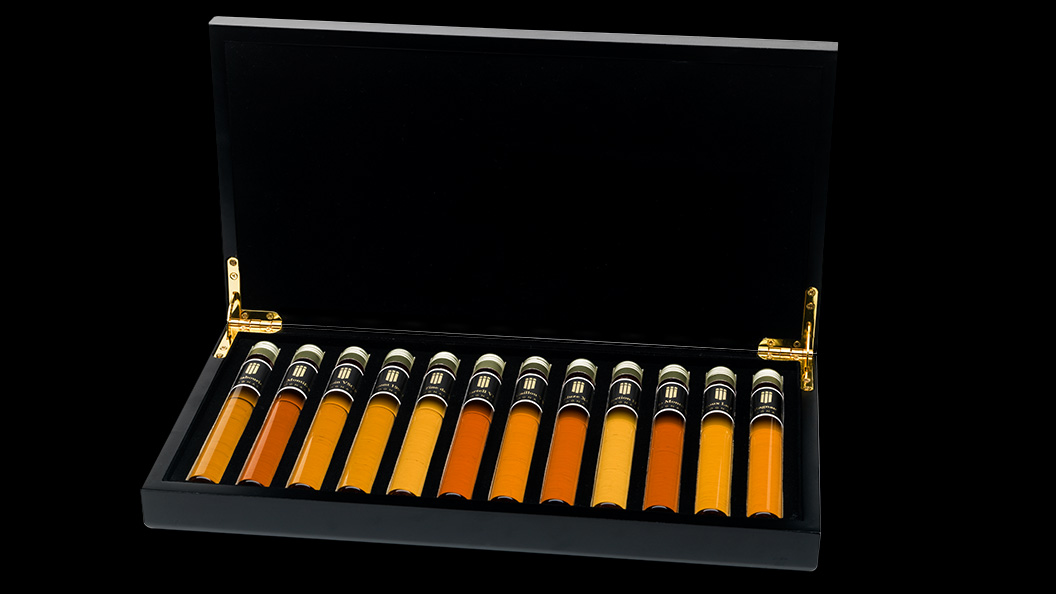
Rum Tasting Collection
Have you become enthusiastic and want to taste the tastiest rum? Then order a Rum Tasting Collection, try them all and find out which Rum you like best!

